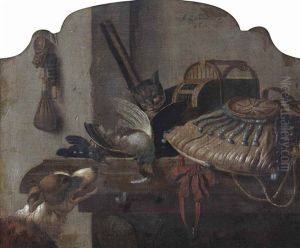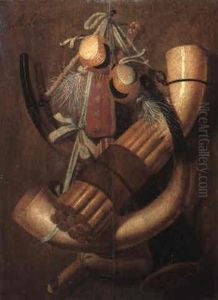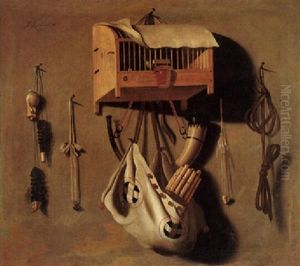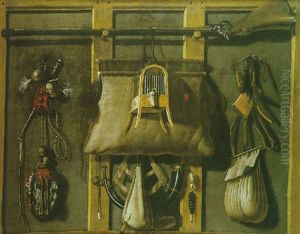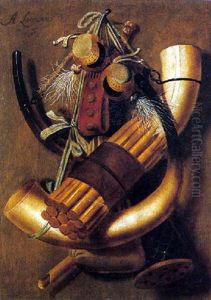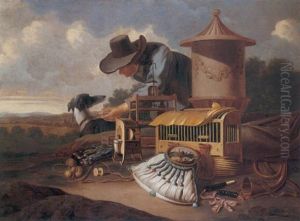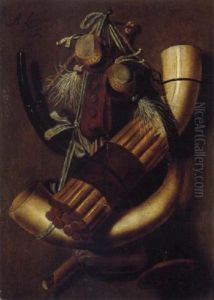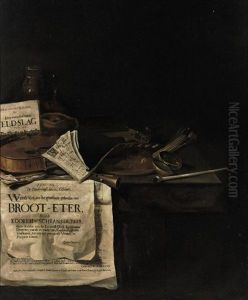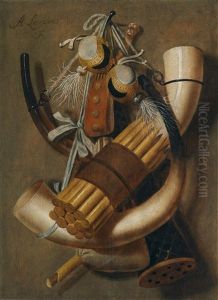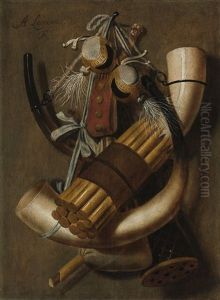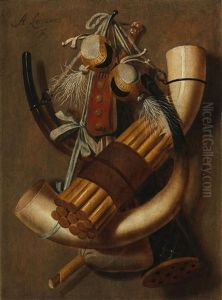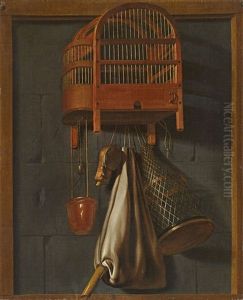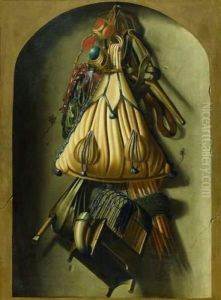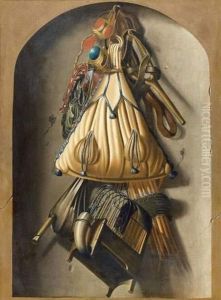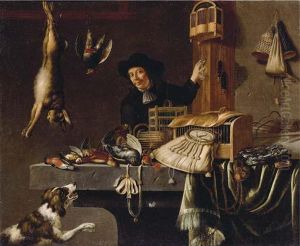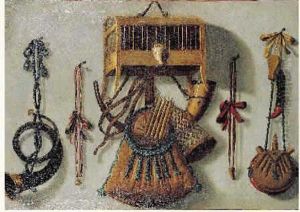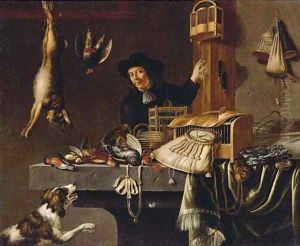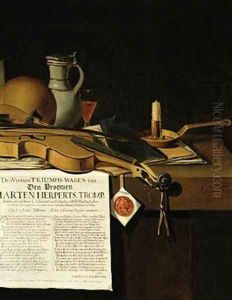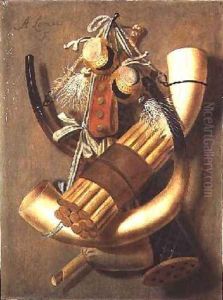Antonius Leemans Paintings
Antonius Leemans was a Dutch painter born in 1631, during a period known as the Dutch Golden Age, a time when Dutch art, science, trade, and military were among the most acclaimed in the world. This era provided a fertile environment for various forms of art, including still life, a genre in which Leemans specialized. Not much is documented about his early life or training, which is common for many artists of the period. However, his works suggest he was well-versed in the techniques and themes popular among Dutch still life painters of the time.
Leemans is primarily known for his still life paintings, which often featured objects like books, musical instruments, and other artifacts laid out in a meticulously detailed manner. His work is characterized by a keen attention to detail, a deep understanding of light and shadow, and a subtle yet impactful use of color. These elements combined to create still lifes that went beyond mere representation; they evoked a sense of the temporal nature of material possessions and the quiet beauty found in everyday objects.
Despite the high quality of his work, Antonius Leemans did not gain the same level of fame as some of his contemporaries. This could be due to the vast number of artists working in the Netherlands at the time, many of whom specialized in the same genres, making the art market highly competitive. Nevertheless, his paintings are appreciated by art historians and collectors for their contribution to the development of still life painting in the Dutch Golden Age.
Leemans' work reflects the broader themes of vanitas and memento mori that were prevalent among Dutch still life painters. These themes served as reminders of the transience of life and the futility of pleasure, often depicted through symbols like skulls, extinguished candles, and wilting flowers. However, Leemans tended to focus more on the beauty and variety of the objects themselves, perhaps suggesting a more subtle contemplation on life and its pleasures.
Antonius Leemans passed away in 1673, leaving behind a modest but significant body of work that continues to be studied and admired. His paintings can be found in various museums and collections, serving as a testament to his skill and the enduring appeal of the Dutch Golden Age of painting. Through his detailed and thoughtful still lifes, Leemans has secured his place in the history of art, offering future generations a window into the aesthetic and philosophical concerns of his time.
